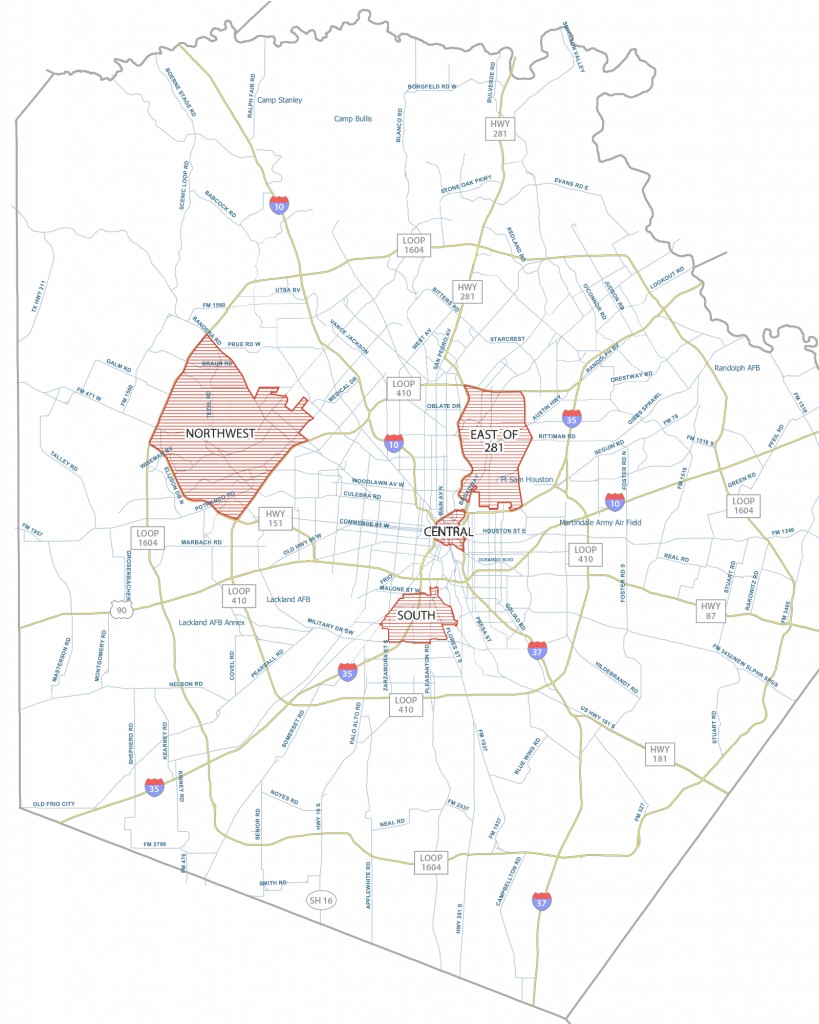 The first four areas of San Antonio chosen to receive smart meters were shared with the CPS Energy Board of Trustees on April 28 as part of a comprehensive update on our $290 million Smart Grid Initiative.
The first four areas of San Antonio chosen to receive smart meters were shared with the CPS Energy Board of Trustees on April 28 as part of a comprehensive update on our $290 million Smart Grid Initiative.
The first areas to get the new meters were chosen for a variety of considerations. In the northwest area, a good deal of the new distributed automation system is already in place, so CPS Energy will be able to test how the different parts of the system will work together. Distributed automation is a major part of the smart grid which allows for real-time, automated adjustment of electricity loads, which increases reliability and saves energy.
 The downtown area has a lot of meters below ground and in other enclosed places, so we will test and tweak the communications signals between the meters and CPS Energy.
The downtown area has a lot of meters below ground and in other enclosed places, so we will test and tweak the communications signals between the meters and CPS Energy.
All three outer areas contain a high percentage of our oldest meters, and so are also the places which had the largest number of estimated bills last summer. Installing smart meters will drastically reduce the number of meters we estimate in any given month.
Installation will begin in August, and continue through 2018, when all 740,000 electric meters and 360,000 gas meters will be replaced or upgraded. We installed 40,000 smart meters across all parts of the city in 2011 as a pilot project.
Early next year, we’ll launch an energy management portal, which will allow customers to go online and track their energy use in near real time. Provided by OPower, the portal will allow you to see a running tally of your bill based on the amount of power you’ve used thus far.
That will allow you to make changes to reduce your bill like inching your thermostat up a couple degrees, for example, rather than getting a bill long after you’re able to do anything about how much energy you used.
It’s important to note that CPS Energy will NOT have the ability to change your thermostat or any other appliance through the new meters. We do have voluntary programs, such as Home Manager, which allow access to A/C thermostats, pool pumps and water heaters in exchange for a rebate, but those programs require additional devices, and customers must proactively enroll in them.
With the first installations set for August, CPS Energy will be reaching out to each neighborhood to help customers understand why we’re upgrading our grid, what the upgrades consist of (meters are the most visible to customers, but they’re a small part of the overall project) and how everyone benefits. If your homeowners’ organization or community group is interested in having us come and speak to you about our Smart Grid Initiative, please email talk@cpsenergy.com.
One benefit with the smart grid will be more quickly identifying power outages. Today, if the power goes out, you must call CPS Energy to let us know, and we have to send a crew out to manually search the lines for the outage. With a smart grid, CPS Energy will receive a remote signal from the exact location of the outage, and we’ll be able to fix the problem remotely or more quickly send a truck out.
When power fails, smart meters will send a “last gasp” signal to CPS, and “we’ll know within seconds,” spokesman John Moreno told the San Antonio Express-News. “That’s one of the big benefits of the smart grid. Now we don’t have to wait for that customer to come home and say, ‘I don’t know how long the power has been out, but the food in my refrigerator is warm.’”
A smart grid also means increased privacy. No more will we have to send meter readers to your home each month to read the meter. No more leaving the gate unlocked, no more worrying about the dog — for you or our meter readers! (And it’s important to note, we’re not laying anyone off. Meter readers are being retrained and transitioned to other parts of the company.)
And how about cleaner air? The smart grid helps with that several different ways: we’ll be driving almost 900,000 fewer miles each year since we won’t have to physically read each meter. We’ll save megawatts through better load management with distributed automation, and we’ll be able to better integrate more renewable power into the grid – all three of those changes mean less pollutants in the air.
“Adopting the smart grid for San Antonio is a natural evolution for a city on the rise,” David Jungman, vice president of Corporate Development and Planning told the board. “It positions us for the future.”
